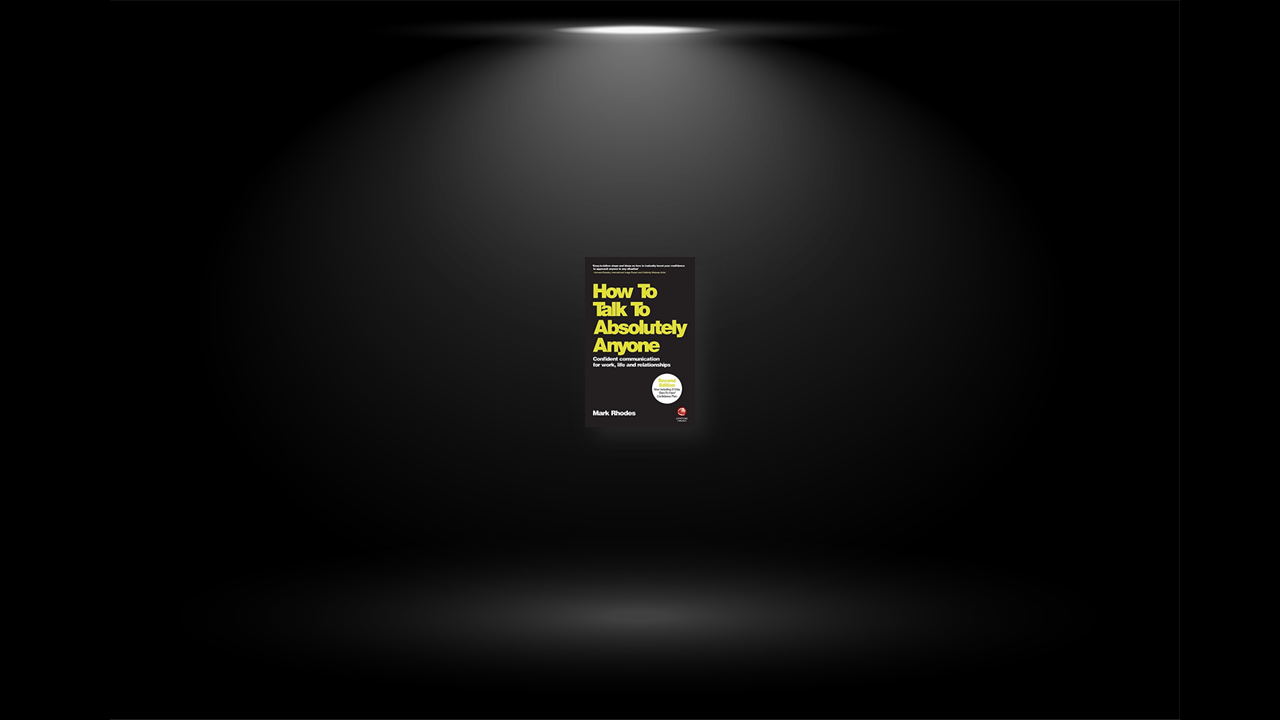Your Mindset – The Biggest Potential Barrier
If you tried to talk to someone and they looked away, what meaning would you attach to that?
You may think you’ve done something wrong, and conclude that starting conversations with people you don’t know is unacceptable. If you internalize that meaning you are unlikely to have much of an appetite for starting conversations with people in the future. But what if they were just shy? Maybe they were upset or having a bad day. If you attach this meaning to it, you’d have a very different outcome.
This shift in your mindset is what can help to overcome the fear around talking to absolutely anyone. Fear is not real. It is an emotional reaction that you do to yourself under certain circumstances. This could be either when something is actually happening or when you think about something that might happen in the future. Your emotional pattern or reaction is based on out-of-date experiences from a time when you didn’t have all the resources you have today. In most cases, fears were developed when you were a child in situations that caused you distress. As a child you did not have the ability, the voice or the logical reasoning to stand up for yourself or deal fully with situations.
Scientists believe we are only born with two fears: the fear of loud noises and the fear of falling. That means that all the other fears you’ve developed over time are learned – through observing what happens to other people, watching television, reading books and, of course, your own life experiences.
It is your thoughts that cause your anxieties and fears, so a great starting point to overcoming those fears is to develop a better awareness of your own thoughts and emotions.
The Dynamics of an Interaction
There are many things that go together to really set the scene and build the dynamics of the interaction. These include…
The environment
The environment you’re in will determine how you feel about your communication and opening a conversation. Are you in a formal environment, such as a business environment, or a social one? Are you at a party, or in a pub or a restaurant? Whatever the environment, this will have a bearing on how appropriate you feel it is to engage in a conversation with somebody new.
Your role and their role
How do you perceive your role in the interaction or situation? Are you going to come across as more senior in this particular environment? Is your role in the environment one where your social proof is demonstrated or judged? Your role in any particular scenario will determine how you feel about initiating the conversation. Typically, when people feel that their role is of a lower standing or a lower value, they will find it more difficult to start the conversation with someone they perceive to be of a higher value. So, if you were at a business seminar and you were listed on the invite as one of the hosts of the seminar, then, in that particular environment, your role would have a high perceived value to it, meaning you would potentially find it much easier to engage in conversations with attendees.
Ultimately, this is just your mindset playing with you. You don’t need to think in terms of value like this. We are all human beings and you should be comfortable talking to anybody in any environment regardless of roles. Your programming impacts how you feel in a given situation. And, of course, your role relates directly to the role of the other person you are talking to and how those two roles relate to each other.
Your perceived value
Your perceived value in a situation is also likely to be based on the role that you are playing in that situation. It could also be based on other things, such as the way you are dressed or what other people are saying about you. For example, are there a number of people there who like you and respect you? It could also be about what you have actually done or your history – the story you tell when people speak to you and ask you questions. Your first impression of the other person before you speak to them (and theirs of you) also has a huge bearing on how the interaction goes.
When some people start talking to somebody they don’t know, the other person might feel awkward. Another person could start the exact same conversation with the very same person and get a very different response: that it is friendly and natural. All of this, of course, comes from the perceived intention the other person picks up on, which, in turn, comes from what we are thinking before speaking to the other person. How we are thinking about that particular interaction, the environment and the other person has the biggest bearing on how we come across.
This is why two people at the same event could go up to an individual, say the exact same thing and get very different responses.
How appropriate you think it is
The dynamic is also affected by how appropriate you think it is to engage somebody in a conversation at the point you talk to them. For instance, it’s safe to assume that just before a wedding ceremony is about to start isn’t an appropriate time to start a general conversation with the bride. However, at the reception party afterwards it’s perfectly normal. We all have to start conversations, from time to time, at moments or in environments where we may not think it is that appropriate. This affects how comfortable we feel about the interaction, and the dynamics of it.
The risk factor
The final element of the dynamics of an interaction is the risk factor; how your communication may be perceived. For example, starting a conversation with someone working in a shop is very low risk compared to stopping a stranger in the street and asking them on a date!
I Got a Bad Response and Didn’t Know How to Handle the Situation
In most situations, if you get a critical comment or response from someone the best way to handle it is as follows. Just calmly say either: “That’s interesting” or “OK”.
In most instances, where someone is critical or gives a bad response, they are expecting one of two outcomes. Either you are going to argue back or you are going to retreat and go away having been humiliated or put in your place.
Said with the right calm, casual tone, the “That’s interesting” or “OK” response confuses them. It is unlikely to escalate a negative situation and it means you do not go away having been put in your place!
Avoid Explaining too Much
Along the same lines of finding out what’s important to someone and the level of detail they’d prefer, there is also the aspect of not explaining too much upfront. What I mean by this is, especially in a business situation, if you are looking to present an idea to somebody or they have enquired about something, it can be useful to ask them (as well as what’s important to them) if they have got any burning questions upfront. This way, you can find out if there are any aspects of the topic you were about to discuss with them that they are particularly keen to know. Sometimes if someone has got a burning question, they are not really focused on the rest of the information you are giving them because their mind keeps going back to this burning question they’ve got and, at the extreme, they could even be looking for clues in what you are saying to try and build evidence to answer this burning question they’ve got in their mind.
Use “But” with Caution
When somebody says something to you and you reply or interrupt with the word “but”, it tends to suggest that you are probably going to disagree with everything that they have just said. The other person then gets defensive and will just look for more and more evidence to support the case that they were building with their initial statement. A far better way to reply to someone who has a difference of opinion to you is to initially seem to agree with them and then move the conversation on.
Very often you can substitute where you would normally say the word “but” and use the word “and” instead. When you say the word “and”, this suggests to the other person that you agree with them and you are now going to add more detail or information to what they have said. And, in many cases, you could – after you have said the word “and” – completely disagree with them.
Respond, Rather Than React
Successful communication, and the outcome, is based upon responding to the other person rather than reacting (or overreacting). A response is a considered, logical reply that has been thought out after due consideration to what the other person has said. A reaction to something that somebody has said is very typically an emotional response rather than a reply stemming from full consideration of all possibilities. An example of this would be when you come back in to work and somebody says, “A customer has been on the phone complaining.” Do you respond or react in this situation? If you react, you are very likely to start saying things like, “Well, we haven’t done anything wrong. They must have ordered the wrong thing”, whereas if you respond, you are more likely to take a step back, stay calm and say, “Well, what’s been going on? Let’s find out the facts and then let’s make a decision about what, if anything, we need to do.” Can you see how responding and reacting are very different?
When we respond rather than react, we typically get the best outcomes. One thing we usually do is consider the other person’s point of view as well.


